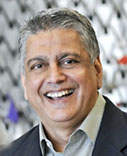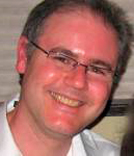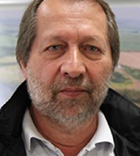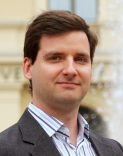
SEMINAR
The Workshop on Renewable Energy Sources and Nanotechnology
WREN 2017

SEMINAR 10: Photoelectrochemistry, Solid-State Chemistry, and Solar Fuels: A Nexus?
Speaker: Krishnan Rajeshwar
Abstract: Solid-state chemistry languished as an esoteric discipline till interest exploded on the so-called high-Tc superconductor materials; oxides were discovered to have unique properties in this regard. Paralleling this was the gradual realization that solid-state chemistry principles underpinned many technologically-important areas such as batteries, supercapacitors, and even solar cells. The culmination of this trend was in the application of solid-state chemistry to the preparation and characterization of electrode materials in photoelectrochemical (PEC) cells. This perspective talk will examine how solid-state chemistry principles have contributed both to the design and synthesis of photoelectrode materials for PEC applications related to water splitting, CO2 reduction, and environmental remediation. The design of new-generation oxide semiconductors with the correct optoelectronic and bulk/interfacial chemistry characteristics needed to efficiently drive the above reactions will be addressed. The list of material pre-requisites for efficient solar fuels generation or photocatalytic degradation is daunting and it is hardly surprising that a “magic bullet” material has not emerged even after 4 decades of R&D effort. However, these same challenges have attracted researchers drawn from diverse communities including solid-state/device physics, photophysics/photochemistry, colloid chemistry, ultra-fast spectroscopy, classical inorganic chemistry, environmental chemistry and organometallics. To keep the discussion coherent, only a very limited subset of topics will be addressed in this plenary talk. The progression from binary to ternary, and even quaternary oxides will be examined from the perspective of “band-gap engineering” (a much-maligned word!) and tuning of the interfacial semiconductor surface/fluid energetics. Examples will be drawn from recent research in the speaker’s laboratory and with collaborators.

SEMINAR 11: Applications of multiscale computational nanoscience for energy technologies.
Speaker: Caetano Rodrigues Miranda
Abstract: In a carbon limited world, there is a demand to environmentally friendly increase production and efficiently use of the energy resources. Recent advances in nanostructured materials have opened a wide range of new multifunctional materials with promising potential for the development of more efficient energy technologies raging from improve fossil fuel exploration, renewable energy and newly proposed carbon neutral cycles. In this context, computational nanoscience can play an important role to understand the fundamental processes, search and design optimal nanostructured systems for energy applications. In our group at IFUSP, we have explored the potentialities to go at nanoscale to search for efficient materials for energy technologies. By using an integrated multiscale computational approach ranging from quantum mechanics calculations, molecular dynamics and Lattice Boltzmann modeling, we have been able to systematically model and characterize the materials at nanoscale and the implications for energy applications over fossil fuel, renewable and carbon neutral cycle perspectives. In this talk, I will summarize some of our findings based on multiscale molecular simulations to search for i) nanostructured based materials for ethanol catalysis, ii) in the context of solar fuels, to convert CO2 to organic feedstock (formic acid) by using nanoalloys and iii) displace more oil by controlling the chemical environment of oil/brine/rock interfaces using inorganic functionalized nanoparticles.

SEMINAR 12: Multiple aspects of dipole effects on charge transfer for energy-conversion systems
Speaker: Valentine I.Vullev
Abstract:

SEMINAR 13: Production of Electricity and High Added-Value Compounds in Direct Glycerol
Fuel Cell.
Speaker: Germano Tremiliosi Filho
Abstract: The complete electro-oxidation of glycerol to CO2 is a complex and difficult process since it has a multi-electron nature (14 electrons) and involves the break of two bonds, C-C-C. However, during its partial anodic oxidation, where none or only one of the C-C bonds of the molecule is breaked, the fuel cell is still capable of generating electrical eergy and additionally produces high added-value reaction products such as dihydroxyacetone, and hydroxypyruvic, mesoxalic, glycolic acids among others. The main challenge of this partial anodic process is related to the control of the selectivity of the formed compounds of great economical interest. Bimetallic nanoparticles or sigle crystal surfaces based on gold or platinum are capable of optimizing the selectivity of this oxidation reaction. In general, the formed products are characterized and identified by in situ FTIR spectroscopy, liquid chromatography and/or ion chromatography. Below is shown a single possible mechanistic route of the initial steps of the oxidation of glycerol on platinum single crystal of different surface orientation (Pt(111) and Pt(100)) in acid medium.

SEMINAR 14: Hybrid Nanoscale Architectures for Electrochemical and Photoelectrochemical Solar Fuel Generation.
Speaker: Csaba Janáky
Abstract: Given that CO2 is a greenhouse gas, using the energy of sunlight to convert CO2 to transportation fuels (such as methanol or methane) represents a value-added approach to the simultaneous generation of alternative fuels and environmental remediation of carbon emissions. Electrochemistry and photoelectrochemistry have been proven to be a useful avenue for solar water splitting. CO2 reduction, however, is multi-electron in nature (e.g., 6 e- to methanol) with considerable kinetic barriers to electron transfer. It therefore requires the use of carefully designed electrode surfaces to accelerate e- transfer rates to levels that make practical sense. Carbon nanomaterials, especially carbon nanotubes and graphene (either alone, or as building blocks of organized 3-D superstructures), are attracting significant attention as large surface area electrode materials. In the first part of my talk I will focus on how to use such carbon-based materials for the electrochemical reduction of CO2. Structure-property relationships will be shown, which may act as guidelines for the rational design of nanocarbon-based cathodes. Subsequently, I will present the use of electrosynthetic (and photoelectrosynthetic) methods for preparing semiconductors on nanocarbon-modified electrode surfaces.1,2 Composites of nanocarbons with both inorganic and organic semiconductors represent an interesting class of new functional materials. Therefore, I will show how electrodeposition can be used to tune composition, crystal structure, and morphology of the nanocomposites for targeted applications. Finally, selected examples will be given for how these electrosynthesized hybrid assemblies can be deployed in various photoelectrochemical application schemes, most importantly CO2 conversion. I will present the controlled synthesis and photoelectrochemical behavior of Cu2O/CNT and Cu2O/graphene composites. A carefully designed, multiple-step electrodeposition protocol was developed that ensured homogeneous coating of the CNTs with the Cu2O nanocrystals. TiO2/3D graphene nanocomposites were also obtained in a similar manner. This enhanced charge transport property for the hybrids resulted in a drastic increase in the photocurrents measured for the CO2 reduction. In addition to this superior performance, long term photoelectrolysis measurements proved that the Cu2O/nanocarbon hybrids were more stable than the oxide alone. Taking these observations together, as a whole a general model will be presented on the role of the nanocarbon scaffold.
Sponsorship
Realization
Support








WREN 2017. © All Right Reserved


